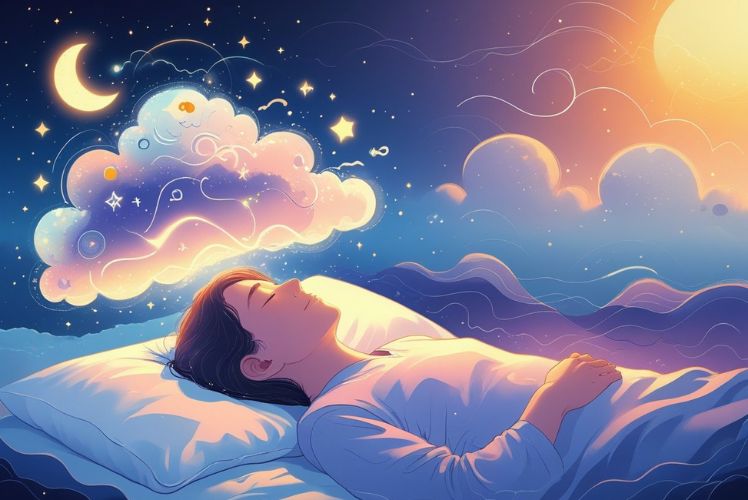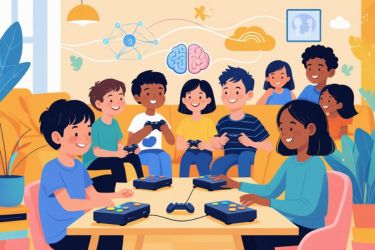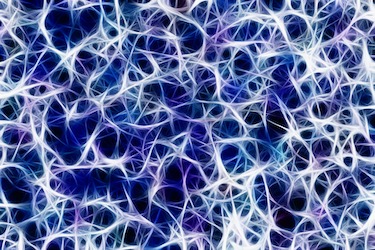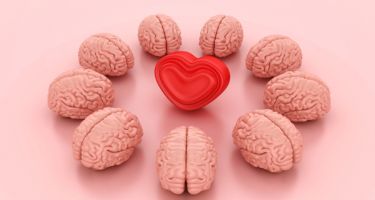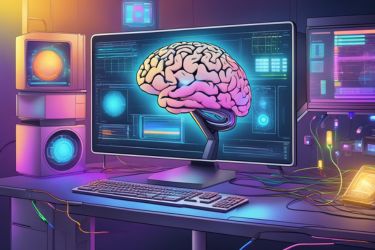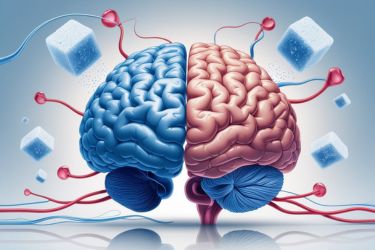Dreaming is something we all experience, but it often leaves us with more questions than answers. While experts may not agree on one reason, most believe that dreams help us process thoughts, emotions, and memories from our day. Some scientists say that dreaming is our brain’s way of making sense of what we learn and feel, while others think dreams might boost our creativity or emotional health.

We usually dream most vividly during a stage called REM sleep, where our brains are highly active. There are many theories about why dreams happen and what they mean, but for now, what we do know is that dreaming is a normal and important part of our sleep every night. If you're curious about the science, meanings, and mysteries behind why we dream, keep reading to uncover what’s really happening when we close our eyes at night.
Key Takeaways
- Dreams help us process thoughts and emotions.
- The science of dreaming is complex, with many different theories.
- Dreaming is a healthy and normal part of our sleep cycle.
The Science Behind Dreaming

Dreams happen in different stages of sleep, with changes in brain activity and specific chemicals affecting what we experience. Our brains process emotions, memories, and even outside sounds as we dream.
Stages of Sleep
Sleep is divided into several stages. These include non-REM (NREM) sleep and REM (rapid eye movement) sleep. Each stage affects our body and brain in different ways.
NREM sleep has three stages, going from light to deep sleep. In deep NREM sleep, our bodies repair muscles and tissues. Dreaming can happen in NREM sleep, but it is less vivid than dreams in REM sleep.
REM sleep is where most dreams occur. During REM, our eyes move quickly, and brain activity rises. Neurotransmitters like acetylcholine increase, causing our brains to become active and ready to dream. The amygdala, which controls emotions, is also very active during REM. For a detailed explanation, see the stages of sleep at Sleep Foundation.
When Do We Dream
We can dream in all stages of sleep, but our dreams are most common and detailed during REM sleep. NREM dreams are usually short and more like simple thoughts or images. REM dreams are vivid and sometimes feel like real experiences.
REM cycles begin about 90 minutes after we fall asleep and repeat several times during the night. Each REM cycle gets longer, which means we dream the most in the later hours of sleep.
Even short wake-ups during the night can feature dream-like moments, but we often forget them. According to research, dream amnesia is common because our brains don't always form strong memories during sleep. Dream recall often depends on how awake we are and if outside stimuli, such as sounds or touch, wake us up after a dream. Learn more about dream recall at PMC.
REM Sleep and Dream Formation
During REM sleep, our brains are very active. The amygdala gets involved, adding emotions to our dreams. Neurotransmitters like acetylcholine increase, which helps our brains become alert enough for detailed dreams.
Visual processing areas light up, which is why dreams are often full of images and movement. REM sleep also blocks signals from the brain to most muscles, so we do not act out our dreams.
External stimuli like noises in our room can sometimes be included in our dreams. For instance, a sound might become part of a dream story. Our brain's ability to connect outside events to dream content is one reason dreams can seem strange or unpredictable. Further insights can be found in The Science Behind Dreaming.
Theories Explaining Why We Dream

There are several well-known theories about the purpose of dreams. Each theory gives us a different way to think about how and why our minds create dreams when we sleep.
Activation-Synthesis Theory
The Activation-Synthesis Theory proposes that dreams happen when our brains try to make sense of random signals that occur during sleep. According to this theory, the brainstem produces bursts of electrical activity during rapid eye movement (REM) sleep. Our brains then work to organise these signals into a story or image, even if the result makes little sense.
We often experience vivid and sometimes strange dreams because the cortex is trying to connect random information. The theory suggests dreams do not always have deep meaning, but instead reflect the brain's effort to organise noise into something understandable. This approach helps explain why dreams can be full of unexpected changes or illogical events. For more, visit this summary of dream theories.
Information-Processing Theory
The Information-Processing Theory focuses on how dreams help us handle daily memories and experiences. Dreams may let us sort and store important memories, while removing unneeded details from the day before. Our brains may also solve problems as we sleep, working on things that troubled us while awake.
Some researchers think dreaming helps us process emotional events, making them less stressful or confusing the next day. Studies also suggest that people who dream after learning something new may remember it better. The theory suggests that dreaming is a tool the brain uses to handle large amounts of information. To read more about how dreams may consolidate and store our memories, view this in-depth explanation.
Continuity Hypothesis
The Continuity Hypothesis says that what we dream about matches what is going on in our lives. Our worries, hopes, and day-to-day activities show up in our dreams, reflecting the real concerns or situations we face. This theory suggests that dreams are not random, but come from our personal experiences and emotions.
We sometimes dream about important events, problems we face, or people we know well. The hypothesis says dreams give us a way to keep thinking about, and perhaps solve, our waking issues. Our dream content often reflects both our conscious and unconscious minds. For specific examples and details, see this overview of dream purposes.
Freudian and Psychoanalytic Perspectives
Sigmund Freud believed that dreams allow us to explore hidden thoughts, wishes, and fears from our unconscious mind. According to his psychoanalytic theory, dreams are a way for our minds to express desires we may not admit while we are awake. Freud argued that dream images, or symbols, stand for deeper meanings that may be connected to our childhood or unmet desires.
He called this process "wish-fulfilment," where our sleeping mind completes actions or expresses feelings that our waking mind may ignore or hide. Freud's ideas paved the way for other psychoanalytic thinkers, though many modern scientists debate if dreams always represent hidden wishes. Further discussion of Freud’s theory and its influence can be found in this detailed look at major dream theories.
Functions and Purposes of Dreams

Dreams play a complex role in our lives, influencing how we store memories, process emotions, solve problems, and adapt to challenges. Scientific research continues to uncover new ways in which dreaming shapes our mental and emotional wellbeing.
Memory Consolidation and Storage
When we sleep and dream, our brains are busy sorting and storing memories from the day. This process, known as memory consolidation, helps us keep important information and forget things we do not need. During the rapid eye movement (REM) stage of sleep, our brain organises facts, skills, and experiences, often replaying them as dreams.
Dreams can act like a filing system, moving memories from short-term to long-term storage. This makes it easier for us to learn new information and recall what we have already learned. Recent studies show that dreams may also help us process emotional experiences, so that memories linked to strong feelings are better integrated in our minds.
Many scientists agree that our dreams serve as memory aides, improving recall and making our learning more effective. For more information, read about how dreams help us store important memories and things we've learned.
Emotional Processing and Mental Health
Dreams are important for working through our emotions. During sleep, especially in REM sleep, our minds sort out worries and feelings that may cause stress while we are awake. By replaying events and emotions in our dreams, we may be able to process fears, anxieties, and conflicts in a safe setting.
Researchers have found links between dreams, mental health, and conditions like depression and anxiety. When dream patterns are disrupted, our ability to deal with emotions may suffer. Some therapy approaches use dream analysis to help people understand and manage difficult feelings. Nightmares, in particular, can signal heightened anxiety or trauma that needs attention.
Healthy dreaming patterns support our mental health and emotional balance. Disturbed or upsetting dreams, however, may signal a need for help or therapy. To learn more, see how dreams help with regulation of emotion and dealing with fears.
Problem-Solving and Creativity
Dreams offer a unique space for our imagination and creativity to flourish. When we dream, we can see unusual combinations of ideas or scenarios, often leading to creative insights that would not occur while awake. Many inventors, artists, and scientists have credited dreams with solving problems or sparking new ideas.
Problem-solving in dreams happens because our brain is free from normal rules and distractions. This allows for flexible thinking and the making of novel connections. Sometimes, we wake up with the answer to a problem that troubled us the day before.
Dreams encourage us to use our creativity and imagination, providing mental rehearsal for challenges and new experiences. If you are interested in how dreams can help with problem-solving and creativity, look into further research on creative insight and dreaming.
Survival and Adaptation
Dreaming might have played a role in our ancestors' ability to survive. Some scientists suggest that dreams helped humans practise dealing with threats by simulating dangers in a safe environment. This theory holds that dreaming prepares us for real-life challenges by letting us test different responses and outcomes.
By rehearsing situations such as running from danger, solving social conflicts, or overcoming obstacles, we might have been better prepared to act quickly when it mattered. Dreams could help us adapt to change, improve our responses in stressful situations, and enhance our ability to cope with unexpected events.
There is also evidence that dreams strengthen group bonds by encouraging empathy and shared stories. For a more in-depth look, see how experts believe dreams could aid group-bonding and empathy function during human evolution.
Types and Content of Dreams

Dreams come in many forms, each offering different experiences during sleep. Some dreams feel notably real and intense, while others cause distress or repeat themes. Our ability to remember dreams also varies from person to person.
Vivid and Lucid Dreams
Vivid dreams are extremely realistic and often remembered in great detail. We might see, hear, or even feel events as if they are happening in real life. Emotions in these dreams are usually strong, and the imagery can be strikingly clear.
Lucid dreams occur when we become aware that we are dreaming while still in the dream. During lucid dreaming, some people can control what happens next or choose how to interact with the dream content. Studies show that about half of us will have a lucid dream at least once, but for some, it happens several times a month.
Both vivid and lucid dreams are not fully understood, but they are believed to be linked to increased brain activity during certain parts of sleep, particularly REM sleep. Lucid dreams can be exciting for many people, and some use them as a way to practise problem-solving or explore creativity. For more detailed information, refer to the Sleep Foundation’s overview on different types of dreams.
Nightmares and Bad Dreams
Nightmares are intense, unsettling dreams that can cause feelings of fear, sadness, or anxiety. Bad dreams may not always be as distressing, but they still make us feel uncomfortable or uneasy. Both can lead to waking up suddenly or struggling to fall back asleep.
Nightmares are most common in children but can occur at any age. Stress, anxiety, or even certain medications may increase the chances of having nightmares. Sometimes, repeated bad dreams might indicate something deeper, such as concerns or stress we have in real life. Sleep disruptions can become more frequent when nightmares happen often, which may lead to tiredness during the day.
The contents of nightmares often include situations where we feel threatened or helpless. These dreams can be powerful reminders of our emotional state or challenges we are facing. For more on why nightmares occur, see the article on 10 types of dreams.
Common Themes in Dreams
Many of us report similar themes in our dreams, no matter where we live or how old we are. Common dream topics include falling, being chased, losing teeth, or forgetting important tasks. These themes often connect to our daily worries, hopes, or fears.
Dream content sometimes reflects real life, such as things we experience, think about, or even wish would happen. Recurring dreams often share the same scenes or feelings, showing that specific issues keep coming back to our minds. Emotional experiences from our waking lives are likely to appear in our dream stories.
Researchers have found that dream themes can provide clues about our mental and emotional health. For instance, stress might lead to more dreams about being late or lost. Looking at our dreams can help us better understand parts of ourselves we do not focus on while awake. Learn more about dream types and their meaning at Medical News Today.
Dream Recall
Dream recall refers to how well we remember our dreams after waking up. Some of us remember dreams nearly every morning, while others rarely recall any dream content at all. Factors such as sleep quality, stress, and even genetics may affect how easily we can recall dreams.
Keeping a dream journal, where we write about our dreams as soon as we wake up, can improve dream recall. Waking up naturally, instead of to a loud alarm, may also help us remember more details. Certain stages of sleep, especially waking directly from REM sleep, make it easier to recall dreams.
Remembering dreams can help us notice patterns, themes, or changes in our emotional health. Improved dream recall can be a useful tool for those who want to explore lucid dreaming or better understand their own mind. For a deeper look into dream recall, visit the Sleep Foundation’s explanation on dream content.
Dream Interpretation and Its Role
Dreams have fascinated us for centuries, crossing boundaries of culture and science. Today, we look at how people have interpreted dreams through history, how modern psychologists approach dream analysis, and how dream interpretation can support therapy and mental health.
Historical and Cultural Perspectives
Throughout history, people have believed that dreams carry messages, offer warnings, or reflect hidden truths. In ancient Egypt, priests wrote down dreams and used them to guide decisions. The Greeks considered dreams to be messages from the gods, while some Indigenous cultures still see dreams as important to spiritual life.
Across Asia and Europe, dream books were common. These books listed dream symbols and meanings so people could look up what their dreams might predict or reveal. Although not based on science, these traditions show how closely people have linked dreams to daily life.
Over time, different cultures have had their own dream rituals. Some used special herbs or chants to encourage vivid dreams. While interpretations have changed, the belief that dreams matter remains strong in many societies.
Modern Dream Analysis
Modern dream analysis started with Sigmund Freud in the late 1800s. Freud believed dreams revealed hidden wishes or feelings. He used dream interpretation to help people explore problems that they could not talk about openly.
Later, Carl Jung added that dreams show symbols shared by many people across cultures. Psychologists now agree that dream meaning is often personal and can change for each person. Many experts say that interpreting dreams depends on our own experiences and emotions.
Today, there is little scientific proof for one single way to interpret dreams. Most researchers agree that dream meaning is more subjective than people once thought. Dream interpretation may help us understand ourselves, but strict rules or universal meanings are not supported by current science. Studies suggest dreams are linked to memory, emotion, and daily life events rather than hidden messages. For more information, see this detailed breakdown of modern dream theories.
Therapeutic Uses of Dream Interpretation
Dream interpretation is a tool used in some types of therapy. Therapists might look at dreams to help people understand feelings or conflicts that are hard to discuss. For example, dreams can bring up issues about family, work, or worries about the future.
People with post-traumatic stress sometimes have repeating nightmares. Therapists use dream work to help these people change what happens in their dreams or face their fears in a safe space. This can reduce distress from bad dreams.
Some types of therapy, like Jungian analysis or certain forms of talk therapy, pay close attention to dream content. Keeping a dream journal can help by making it easier to remember and talk about our dreams in therapy sessions. For more on the role dreams play in mental health, refer to the experts at the Cleveland Clinic.
Factors Influencing Dreaming
Dreams do not happen in isolation. Our physical health, mental state, daily activities, and even certain medicines have a direct effect on what we see and feel in our dreams.
Sleep Disorders and Insomnia
Sleep disorders like insomnia can disrupt the normal cycles of sleep. When we struggle to fall asleep or stay asleep, our time spent in rapid eye movement (REM) sleep is often reduced. REM sleep is when most dreaming takes place.
People with sleep disorders may experience more fragmented or unusual dreams. Sometimes, the lack of quality sleep causes us to remember our dreams more clearly, especially if we wake up during REM sleep.
Insomnia can make dreams more vivid or stressful due to heightened anxiety and stress at night. Those who regularly experience broken sleep, such as people with sleep apnoea or restless legs syndrome, often report more nightmares or negative dream content.
Sleep disorders are not only uncomfortable, but they also influence our dream content, frequency, and emotional tone. Seeking advice from a sleep medicine specialist can sometimes help us better understand strange or troubling dreams. Learn more about the link between sleep and dreams at the Sleep Foundation.
Medications and Neurochemistry
Various medications change the chemical balance in our brains. Drugs used to treat mental health conditions, like antidepressants, often alter levels of neurotransmitters such as serotonin and dopamine.
These changes affect how our brain processes dreams. Some medications, including sleep medicine or anxiety drugs, can make dreams more colourful, intense, or bizarre. On the other hand, certain medicines might actually suppress REM sleep, making dreams less frequent or harder to recall.
Prescription drugs for blood pressure, allergies, and even some pain medications can produce unusual dreams or nightmares. It is important for us to talk to a doctor if new medicines seem to be affecting our dream patterns, especially if these dreams are disturbing or frightening.
Neurochemistry is complex, but it plays a significant role in shaping what we dream and how often we remember it.
Waking Life and External Influences
What happens during our day often finds its way into our dreams. Emotions, stressful experiences, and even what we see, hear, or smell can show up in our dream stories. Strong feelings like anxiety or excitement increase the chance of vivid dreams.
External factors, such as noises in our bedroom or changes in light, can influence what happens in our dreams. Studies show that a ringing alarm clock or a sudden noise might be woven into our dreams in creative ways. Even smells can affect the type of dreams we have; for instance, pleasant scents could lead to more positive dream themes.
Some researchers believe cultural background can also impact dream content and how we interpret our dreams. For a deeper look at how waking life shapes our dreams, see this guide at Learning Mind.
Hallucinations and Consciousness
Dreaming is closely linked to the concept of consciousness. When we dream, our minds create experiences that can feel as real as those in waking life, yet we know they are not actually happening.
Dreams are sometimes compared to hallucinations, because both involve seeing, hearing, or sensing things that aren't physically present. However, hallucinations occur while awake, while dreams happen during sleep. Some sleep disorders, such as narcolepsy, can blur this line by causing dream-like experiences while awake or drifting into sleep.
Our brain activity during REM sleep is similar to the activity shown in parts of our brain when we are awake. This explains why dreams can sometimes mimic real thoughts, fears, and even memories. Examining how consciousness affects and is affected by dreaming can help us understand both sleep and mental health issues, especially in people who experience frequent or disturbing hallucinations.
Frequently Asked Questions
Dreams can occur for many reasons, from how our minds process emotions to the way our brains react during sleep. We may notice certain patterns in what we remember, who appears in our dreams, and why some dreams feel more real than others.
What instigates the occurrence of dreams and nightmares?
Dreams often happen most during REM (rapid eye movement) sleep, when our brains are highly active. Nightmares can be triggered by stress, anxiety, trauma, or even certain foods and medications. Sleep disorders and irregular sleep routines can also make nightmares more common.
What are the psychological reasons behind dreaming?
Some psychologists believe dreams help us process our feelings and problems from waking life. Our brains might use dreams as a way to work through emotions, practise dealing with difficult situations, or make sense of daily events. According to some researchers, dreaming could also help us manage our memories and regulate mood, although opinions differ on how this works.
For what reasons do we dream about certain individuals?
We tend to dream about people who play important roles in our lives or who we think about often. Familiar faces, family members, friends, and even people we have unresolved issues with, may appear in our dreams. Common dream themes often involve people because relationships are a major part of our everyday thoughts and worries.
Why do our dreams seem to feel incredibly vivid?
Dreams can feel extremely real because our brains are very active during REM sleep, sometimes even more active than when we are awake. Strong emotions and memories can make dream scenes clear and intense. The vividness can also depend on how easily we wake up during or right after a dream.
Can the presence of dreams indicate the depth of our sleep?
Most dreams happen in REM sleep, which is a phase of sleep that cycles throughout the night. We dream several times each night, especially during this deep stage. However, remembering our dreams does not always mean we had better or more restful sleep—it often means we woke up during or just after REM sleep.
What causes the frequent oblivion of our dream content upon waking?
Forgetting dreams is common. Our brains do not store most dream content in long-term memory, so unless we wake up during or right after a dream, we are likely to forget it. Attention on daily tasks and distractions as soon as we wake can also make it harder to hold onto dream memories.

